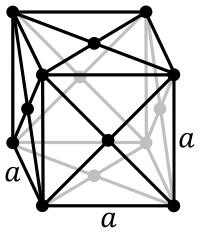
Photo from wikipedia
The topic of the article is to define the average value of linear energy transfer (LET) for carcinogenic effects of radon progeny. The microdosimetric model of boundary specific energy is… Click to show full abstract
The topic of the article is to define the average value of linear energy transfer (LET) for carcinogenic effects of radon progeny. The microdosimetric model of boundary specific energy is used. It follows that the effect at high LET should decrease approximately with the third power of LET. This is verified by the analysis of the relationship between radiation effects ratio and LET in published experiments with oncogenic transformation of mammalian cells irradiated with the monoenergetic alpha particles. If these cells are exposed with the radon irradiator, our analysis leads us to conclude that the oncogenic effect of radon progeny is comparable to that of alpha particles with a LET of 75 keV/μm. It is about a quarter lower than the LET value, where the effect of the monoenergetic alpha particles reaches its maximum level. Some implications for lung cancer due to radon inhalation may also be carefully examined.
Journal Title: Radiation protection dosimetry
Year Published: 2019
Link to full text (if available)
Share on Social Media: Sign Up to like & get
recommendations!